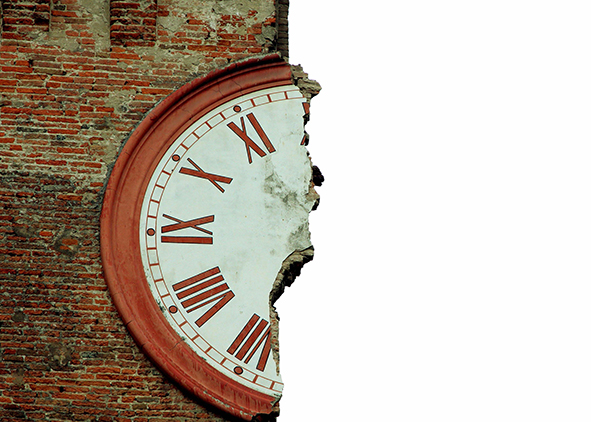Architectural Heritage and timeless time. For a temporary permanence
DOI:
https://doi.org/10.19229/2464-9309/472018Keywords:
architectural heritage, digitalization, concept of time, impermanence, conservation processAbstract
Digitalisation has effects on technological processes and products, as in previous industrial revolutions. Among its disruptive consequences on society and on individuals, the emergence of a different concept of Time is already influencing the operative and, above all, theoretical field of the architectural heritage. Unusual forms of memory undermine the traditional vision of heritage, based on a linear vision of time, which clearly separates the Past from the Future, leaving to the Present a mere role of transporter. Some contemporary strategies may usefully be referred to the oxymoronic Temporary Permanency, because the presumed immutability, ambition of now obsolete rigid and abstract conservative objectives, has been overcome.
Downloads
Article Metrics Graph
References
Augé, M. (2004), Rovine e macerie [or. ed. Le temps en ruines, 2003], Boringhieri, Torino.
Castells, M. (2010), The Rise of the Network Society, Wiley-Blackwell, Chichester.
Chitty, G. (ed.) (2017), Heritage, Conservation and Communities – Engagement, participation and capacity building, Routledge, London.
Council of Europe (1985), Convention for the Protection of the Architectural Heritage of Europe. [Online] Available at: www.coe.int/en/web/conventions/full-list/-/conventions/treaty/121 [Accessed October 11th 2018].
Gasparoli, P. and Cecchi, R. (2011), La manutenzione programmata dei beni culturali edificati, Alinea Firenze.
Garofalo, I. (1996), “Le stavkirker norvegesi un gioiello dell’architettura medievale nord-europea”, in Adrastea, n. 6, pp. 30-40.
Germanà, M. L. (2010), “Il piano di manutenzione e il costruito con valore culturale: criteri e strumenti della manutenzione programmata per il Patrimonio Architettonico”, in Talamo, C. (ed.), Procedimenti e metodi della manutenzione edilizia (Vol. II) – Il piano di manutenzione – Ambiti di applicazione, strategie e procedure, Esselibri, Napoli.
Germanà, M. L. (2011), “L’innovazione tecnologica per il Patrimonio Architettonico nel dialogo fra passato, presente e futuro”, in De Giovanni, G. and Angelico, E. W. (eds), Architecture and Innovation for Heritage – Proceedings of the International Congress, Agrigento 30 aprile 2010, Aracne Editrice, Roma.
Germanà, M. L. (2013), “Contaminazioni tecnologiche e Variabile Tempo”, in Sposito, A. and Mangiarotti, A. (eds) (2013), East-West – artistic and technological contaminations | Oriente-Occidente – contaminazioni artistiche e tecnologiche, International Symposium Milano 12-14 dicembre 2012, Monografie di Agathón, Offset, Palermo.
Germanà, M. L. (2015), “The ‘use’ in the reliable interventions on the Mediterranean architectural heritage”, in Proceedings of ReUso 2015 – III Congreso Internacional sobre Documentación, Conservación, y Reutilización del Patrimonio Arquitectónico, Editorial Universitat Politècnica de València.
Howells, G. (1995), “Multicultural and Inter-disciplinary Aspects of Design and Technology: an Overview of Japanese Carpentry”, in Design & Technology Teaching, vol. 27, issue 3, pp. 9-13.
Giachetta, A. (2004), Architettura e tempo – La variabile della durata nel progetto di architettura, CLUP, Milano.
ICOMOS (1994), The Nara Document on Authenticity. [Online] Available at: www.icomos.org/charters/nara-e.pdf [Accessed September 8th 2018].
Lauria, M. (2008), La permanenza in architettura – Progetto Costruzione Gestione, Gangemi, Roma.
Landsberg, A. (1995), “Prosthetic memory: the ethics and politics of memory in an age of mass culture”, in Grainge, P. (ed.), Memory and popular film, Manchester University Press, Manchester. [Online since 2018] Available at: www.manchesteropenhive.com/view/9781526137531/9781526137531.xml [Accessed October 9th 2018].
Meyers, G. E. (2012), “The experience of Monumentality in Etruscan and Early Roman Architecture”, in Thomas, M. L. and Meyers, G. E. (eds), Monumentality in Etruscan and Early Roman Architecture – Ideology and Innovation, University of Texas.
Munford, L. (1977), La città nella Storia [or. ed. The City in the History, 1961], Bompiani, Milano.
Pacey, A. (1986), Vivere con la Tecnologia [or. ed. The culture of technology, 1983], Editori Riuniti, Roma.
Pasqualotto, G. (1992), Estetica del vuoto – Arte e meditazione nelle culture d’Oriente, Marsilio, Venezia.
Piccolo, L. (1956), Gioco a nascondere Canti barocchi e altre liriche, Mondadori, Milano.
Riegl, A. (1982), Scritti sulla tutela e il restauro [orig. ed. Die moderne Denkmalkultus, 1903], Ila Palma, Palermo.
Rifkin, J. (2011), The Third Industrial Revolution – How Lateral Power is Transforming Energy, the Economy, and the World, Palgrave Macmillan, London.
Ruskin, J. (1982), Le sette lampade dell’architettura [orig. ed. The Seven Lamps of Architecture, 1849], Jaca Book, Milano.
Schwab K. (2015), “The Fourth Industrial Revolution – What It Means and How to Respond”, in Foreign Affair [Online] Available at: www.foreignaffairs.com/articles/2015-12-12/fourth-industrial-revolution.
Sparrow, B., Liu, J. and Wegner, D. M. (2011), “Google Effects on Memory: Cognitive Consequences of Having Information at Our Fingertips”, in Science, vol. 333, issue 6043, pp. 776-778.
Sposito, A. and Mangiarotti, A. (eds), (2013), East-West – artistic and technological contaminations | Oriente-Occidente – contaminazioni artistiche e tecnologiche, International Symposium Milano 12-14 dicembre 2012 –Monografie di Agathón, Offset, Palermo.
Sposito, A. (1995), “Processi conoscitivi e processi conservativi”, in Sposito, A. (ed.), Natura e arteficio nell’iconografia ennese, DPCE, Università degli Studi di Palermo, Palermo.
Ugo, V. (2007), Architettura e temporalità, Edizioni Unicopli, Milano.
Volpe, G. (2015), Patrimonio al futuro – Un manifesto per i beni culturali e il paesaggio, Electa, Milano.

Downloads
Published
How to Cite
Issue
Section
License
This Journal is published under Creative Commons Attribution Licence 4.0 (CC-BY).
License scheme | Legal code
This License allows anyone to:
Share: copy and redistribute the material in any medium or format.
Adapt: remix, transform, and build upon the material for any purpose, even commercially.
Under the following terms
Attribution: Users must give appropriate credit, provide a link to the license, and indicate if changes were made; users may do so in any reasonable manner, but not in any way that suggests the licensor endorses them or their use.
No additional restrictions: Users may not apply legal terms or technological measures that legally restrict others from doing anything the license permits.
Notices
Users do not have to comply with the license for elements of the material in the public domain or where your use is permitted by an applicable exception or limitation.
No warranties are given. The license may not give users all of the permissions necessary for their intended use. For example, other rights such as publicity, privacy, or moral rights may limit how you use the material.


















































































